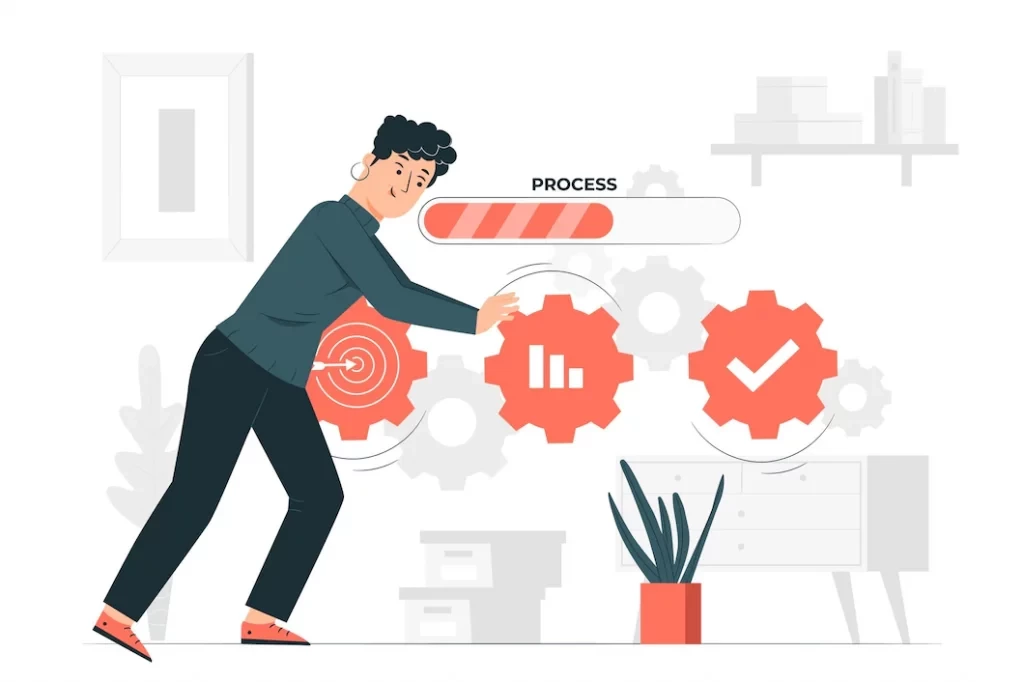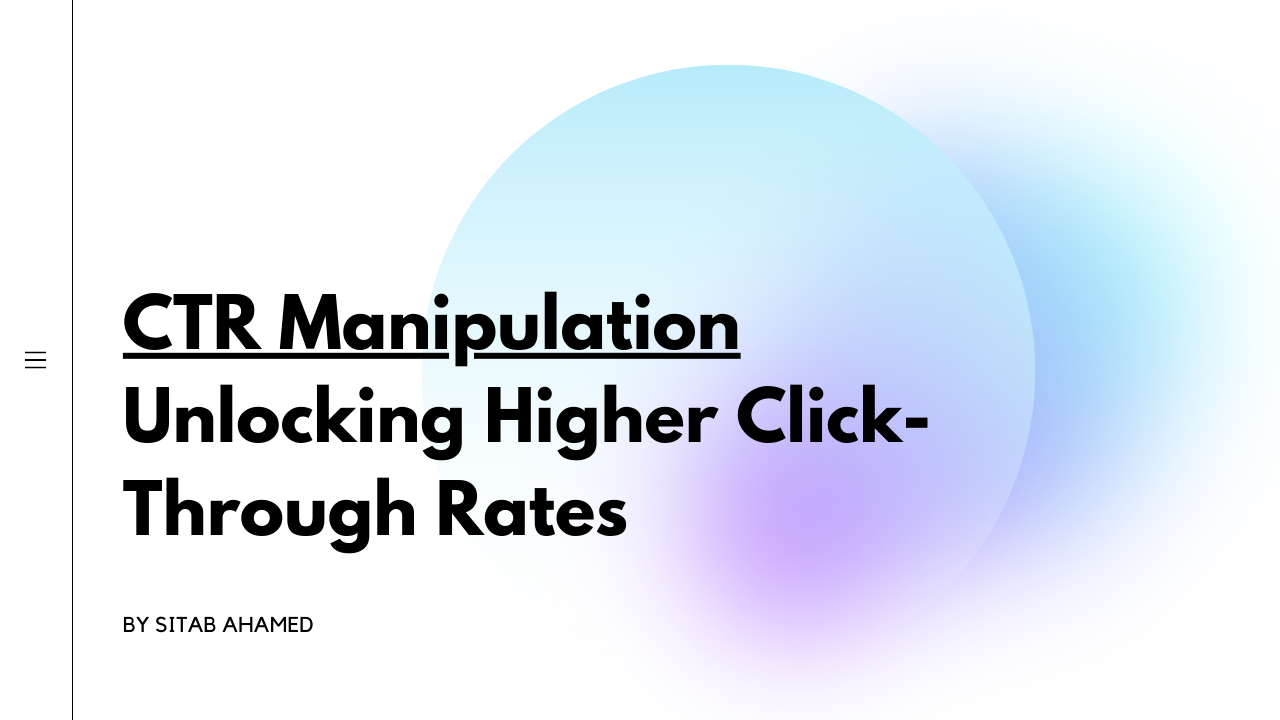Boost Your CTR With Cutting-Edge Manipulation Approaches
In today's competitive digital landscape, raising your click-through rate (CTR) calls for a nuanced understanding of user psychology and innovative control techniques. As we discover these advanced approaches, it ends up being evident that the trick to opening higher conversion prices exists not just in the methods themselves, but in how they are applied.
Comprehending User Psychology
Recognizing customer psychology is crucial for maximizing click-through rates (CTR), as it looks into the motivations and behaviors that drive customers to engage with content. By comprehending the cognitive processes and psychological triggers that affect decision-making, marketers can produce much more reliable methods targeted at capturing user passion.
One trick element of user psychology is the principle of cognitive predispositions, which are systematic patterns in assuming that impact judgment and behavior. For circumstances, the deficiency concept suggests that users are more most likely to act when they regard restricted schedule. This concept can be leveraged to create a feeling of necessity, motivating customers to click a deal before it expires.
Furthermore, comprehending the role of social evidence is essential. Customers commonly look to the actions and viewpoints of others to educate their decisions. Incorporating endorsements, reviews, or user-generated web content can improve integrity and urge interaction.

Crafting Engaging Headings
Crafting engaging headlines is crucial for capturing individual focus and driving click-through rates. A well-structured headline offers as the gateway to your material, providing a concise sneak peek that lures users to involve even more.
Including workable language can substantially boost a heading's efficiency. Verbs that suggest an activity, such as "uncover," "increase," or "discover," produce a sense of seriousness and motivate users to take immediate activity.
By aligning your headlines with usual search queries, you boost the likelihood of showing up in search results, therefore increasing visibility. In recap, an attentively crafted headline is a crucial tool for enhancing customer interaction and driving higher click-through prices.
Utilizing Psychological Triggers
Psychological triggers play a crucial role in affecting individual habits and can considerably enhance click-through prices. By touching right into the feelings of your audience, you create a more profound connection that promotes involvement and drives activity. Understanding the numerous psychological triggers-- such as worry, trust fund, joy, and shock-- allows marketers to tailor their messaging strategically.
For example, stimulating sensations of nostalgia can resonate deeply with audiences, encouraging them to click on material that reminds them of treasured memories. Likewise, including components of wit can lighten the state of their website mind, making your content a lot more attractive and shareable. On the various other hand, concern of missing out (FOMO) can compel customers to click on promotions or offers, as they do not want to miss out on an opportunity.
To successfully utilize psychological triggers, marketers must ensure that their content lines up with their audience's values and interests. Crafting narratives that resonate mentally can enhance relatability, making your campaigns much more impactful. By recognizing and leveraging these emotional responses, services can create compelling contact us to activity that resonate with individuals, eventually causing greater click-through rates and enhanced engagement with their web content.
Implementing Seriousness Techniques
Creating an emotional connection is only one component of driving individual involvement; implementing seriousness techniques can even more improve click-through prices by motivating prompt activity. Necessity techniques take advantage of the mental principle of scarcity, making individuals feel they must act quickly to prevent missing out on important opportunities.
One effective approach is to use time-sensitive language, look these up such as "limited time offer" or "only readily available today." This produces a sense of stress that encourages users to click before the possibility disappears. Additionally, incorporating countdown timers on landing web pages or marketing emails can aesthetically reinforce this urgency, engaging individuals to act swiftly.
One more method involves highlighting restricted supply accessibility. Phrases like "only 3 left in stock" or "marketing out quickly" can trigger a fear of losing out, motivating prompt activity. Strong and clear call-to-action buttons, such as "Order Yours Currently" or "Claim Your Spot," can even more enhance this effect by routing customers towards the preferred action.
Including these necessity methods right into your marketing strategy not only promotes a feeling of immediacy yet additionally dramatically enhances user involvement and click-through prices, eventually driving much better conversion end results.
Analyzing and Optimizing Results
To effectively enhance your click-through rates (CTR), it is vital to evaluate and optimize outcomes continuously. Begin by gathering data from different sources, including site analytics, A/B screening, and customer comments. These understandings will certainly help recognize which methods resonate most with your audience.
Next, concentrate on key performance indications (KPIs) such as click prices, bounce prices, and conversion rates. By recognizing these metrics, you can discern patterns and fads that notify your decisions. For example, an unexpected decrease in CTR might signal the demand for web content reevaluation or style modifications.
Additionally, sector your target market to customize your methods much more specifically. Various demographics might react uniquely to your campaigns, so customizing your messages can significantly affect engagement.
Implement repetitive screening to fine-tune your methods based on empirical proof. CTR Manipulation. Experiment with variations in headings, contacts us to action, and visuals while monitoring their efficiency closely
Verdict
To conclude, enhancing click-through prices necessitates a complex approach based in mental principles. Utilizing psychological triggers, urgency strategies, and well-crafted headlines can considerably influence user actions. By recognizing the underlying motivations of the audience and purposefully why not look here implementing these methods, marketers can promote much deeper engagement and drive conversions. Constant analysis and optimization of results will guarantee these methods continue to be efficient, adjusting to progressing customer choices and market dynamics.

Emotional triggers play an essential duty in affecting individual actions and can significantly boost click-through rates. By recognizing and leveraging these psychological reactions, organizations can produce compelling calls to action that resonate with users, inevitably leading to greater click-through prices and improved engagement with their web content.